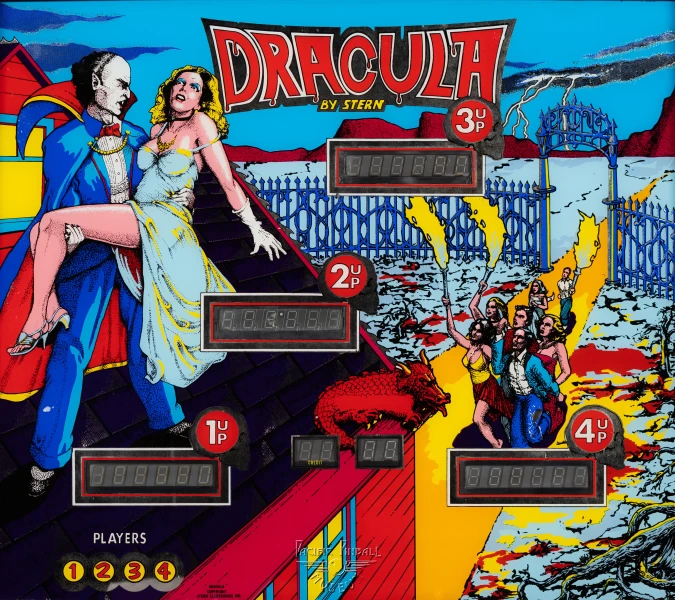Dracula
Dracula Preview Image

Machine Details
Manufacturer
n/a
Year
n/a
Technology Era
n/a
Machine Description
Content Under Review
Help us improve this content
Your support accelerates our content verification efforts.
Support Our WorkStern Electronics' 'Dracula' pinball machine, released in 1979, represented one of the earliest solid-state pinball machines to capitalize on the enduring popularity of vampire mythology. Coming at a pivotal time when the industry was transitioning from electro-mechanical to solid-state technology, this machine helped demonstrate the potential of the new electronic systems.
The machine's artwork and playfield design drew heavily from classic vampire iconography, featuring a brooding Count Dracula, gothic castles, and midnight scenarios. The playfield layout included multiple drop targets, pop bumpers, and a special 'coffin' target area that added thematic depth to the gameplay. As one of the early solid-state machines, it incorporated electronic sound effects and digital scoring, though these were relatively simple compared to later developments.
Dracula's release coincided with a broader cultural revival of vampire themes in popular entertainment during the late 1970s. The machine's success helped establish horror-themed pinball as a viable genre, paving the way for numerous supernatural and horror-themed machines that would follow in subsequent decades. While not as technologically advanced as later horror-themed pins, it remains a significant example of early solid-state era design and thematic integration.
Production numbers for the Dracula pinball machine were modest by industry standards of the era, with approximately 2,100 units manufactured. Today, surviving examples are sought after by collectors, particularly those interested in early solid-state machines or horror-themed pinball games.